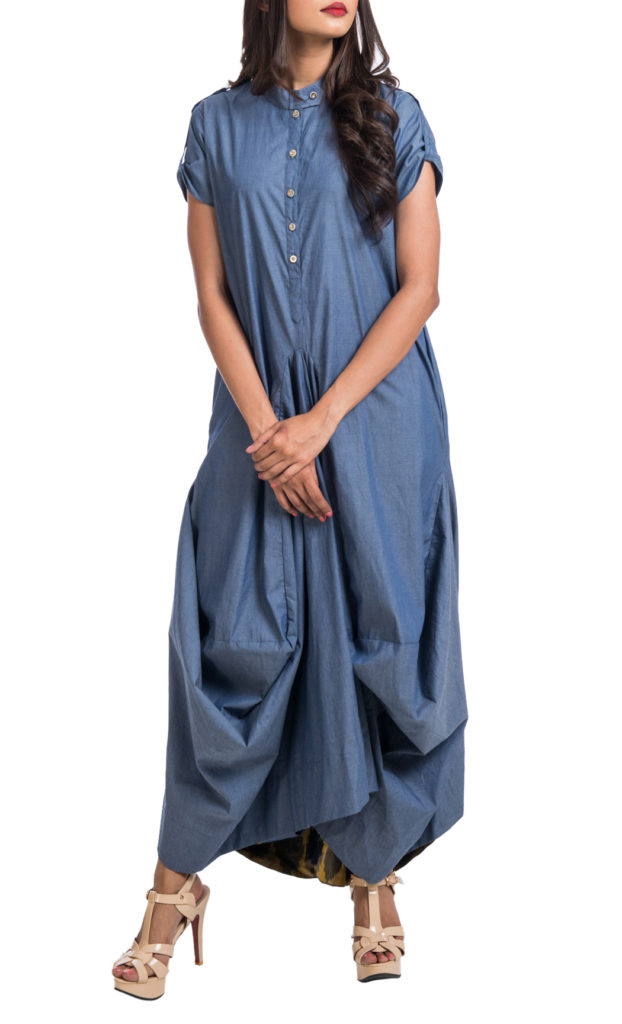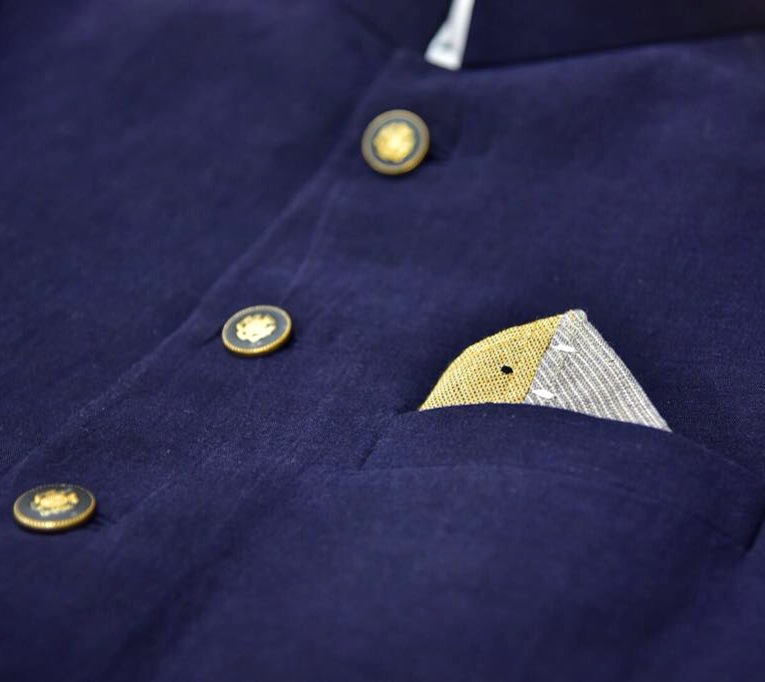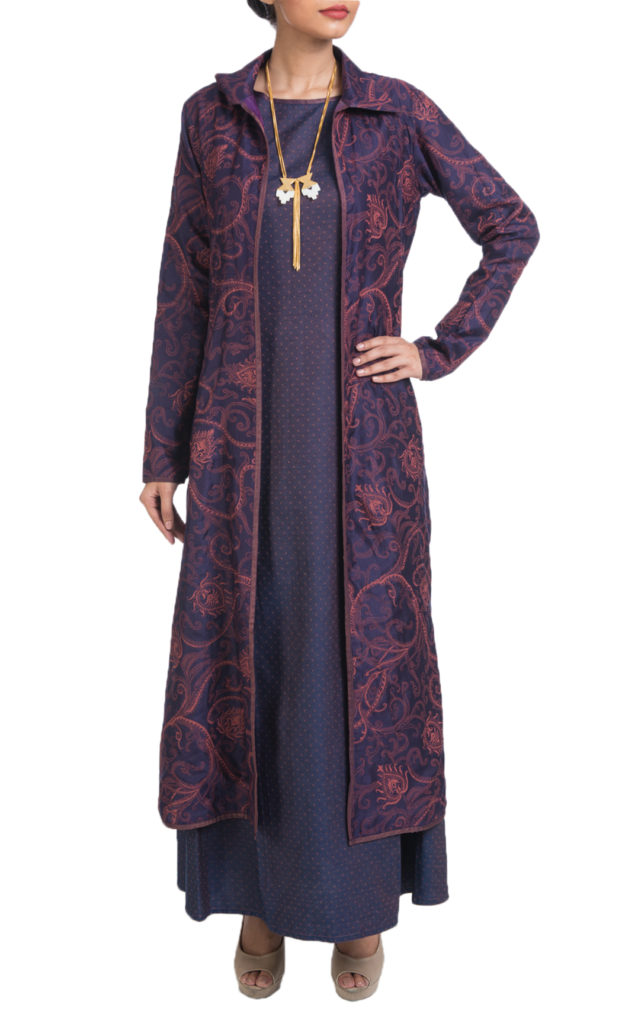India is the second largest denim consumer in the world. Over 550 million pieces of denim apparel and over 750 million meters of denim fabric were sold in domestic market in 2016. India is already consuming more denim than US and EU market and it is projected that the country will consume more than 800 million pieces of denim apparel in 2021. A recent report said that three companies Lenzing, Santoni and Unitin introduced Den/IM 2.0, an innovation in athleisure that brings body-mapping technology to an already innovative denim jean. The ‘I am DENIM’ athleisure collection, made with stretch indigo denim on seamless circular knitting machines uses body-mapping for superior fit and performance. Closer home Indian manufacturers and designers are also doing their bit to evolve denims as a go to fabric while making them attractive exports as well.
Denim Evolution
The evolution of denim has come a long way. Back in the 60’s and 70’s, one associated with denim with only jeans. Brands like Levis and guess revolutionised the use of this fabric and today denim can be seen with new designs with almost every brand. There are a lot of new things that Indian manufacturers are doing for example: stretch indigo denim on seamless circular knitting machines. Oxymoronically, what is today a wardrobe staple, started off as being purely a functional one. “The first pair of jeans can be traced back to the California Gold Rush of the mid-19th century, when a Jewish immigrant named Levi Strauss responded to the miners’ needs for more sturdy trousers. However, India’s rock-and-roll generation admits to having found it difficult to procure jeans, even though indigo, the dye used to make denim fabric, came from a plant indigenous to India (Indigofera tinctoria),” says Varsha Wadhwa, Fashion Designer and founder of VW Design Co. Incidentally The first international denim show in India, Denim Flexx Menn recently took place in Bangalore. This was to encourage denim and jeans to create a platform for Indian and International denim community to come together with an aim to consolidate the efforts of denim industry. It was a platform where the large Indian denim industry can come together and attract attention of global denim community.
Innovation Matters
Denim is seen more as a casual fabric as opposed to a serious one. “But today, one can use embroidery on denim, use it for belts, shoes and just about anything. It has come to be one of the most versatile fabrics,” says Sneha Mehta, Founder, Kukoon (www.kukoonthelabel.com). Denims are gradually becoming a lifestyle product from essentially a fashion product, as it was seen since past few years. “Denims originated as a work wear option in the west and made its place in fashion industry shortly after that. Now the brands are concentrating on making denims a round-the-clock wearable. Spandex, mix with denims has made denims a lot more comfortable and wearable,” says Manish Tripathi, Fashion Entrepreneur.
Fabric Talk
Denim is a sturdy cotton warp faced textile in which the weft passes under two or more wrap threads. This twill weaving produces a diagonal ribbing that distinguishes it from cotton duck. The most common denim is indigo denim, in which the wrap thread is dyed, while the weft thread is left white. As a result of the wrap faced twill weaving, one side of the textile is dominated by the blue wrap threads and the other side is dominated by the white weft threads. This causes blue jeans to be white on the inside. The indigo dyeing process, in which the core of the wrap threads remains white, creates denim’s signature fading characteristics. “The latest development in denim design, as well as the newest member to our sustainable family of products is Conetouch. In close collaboration with yarn manufacturer Unifi, our Cone 3D fabric research and development department has developed a denim fabric using a new REPREVE-based yarn technology allowing for the enhanced stretch and performance of synthetic fibers while keeping an ultra-soft, natural cotton-like hand feel in order to achieve the best of both worlds in comfort stretch options for both men and women. This exclusive technology doesn’t end there however; it is also eco-friendly in that the repreve-based yarns are made up of reconstituted polyester- each pair of jeans made with Conetouch fabric will contain on average what used to be 8 plastic bottles,” says Rosy Ahluwalia, Designer Hollywood & Bollywood Fashion.
Export Thrust
Indian manufacturers are competing with manufacturers from China and Bangladesh for their share in international export market. From using premium quality cotton to indigenous organic dyes, indian manufacturers are taking the standards of Indian denims to a new vertical. The global market for denim is forecasted to reach $64.1 billion by 2020. The Indian denim industry has shown continual growth over the years and currently the country boasts of a denim manufacturing capacity of around 1.1 billion metres per annum. Its utilization levels are pegged at 80-85 per cent. Asia is the largest exporter of denim. The denim market has grown exponentially over the years and has continued to do so at a constant rate. Vasundhara Mantri & Aayshya Jhunjhunwala, Co-founders, Shaadilogy.com opine, “India is an emerging denim export region owing to its quality standards, cost effectiveness and large pool of skilled work force. On the domestic front, the denim wear market is driven by increasing disposable incomes, westernisation of work culture and the ensuing rise in the popularity of denim jeans as business casual wear. With increase in globalisation, young India prefers denims as a part of their essential daily wear.”
Policy Initiatives
The textile sector, which is an important segment of the economy of the country, features in the priority list. The Indian denim market is projected to grow at a CAGR of 15% to reach Rs 27,200 crore in 2018 as per Technopak Advisors. Denims are one of the most versatile and staple fabric across the globe, and hence a huge scope. India is one of the key exporters of denim fabrics to the world. Government’s various plans to boost industries and start-ups in the country, the numbers are soaring higher. Initiatives such as the Make-in-India augur well for the development of this industry since they aim to promote innovation in the manufacturing sector and provide impetus to the sector’s growth by building best-in-class manufacturing infrastructure. However, for the denim sector to benefit from the outsourcing movement away from China, India’s policymakers need to formulate specific policies that cater to the segment’s demands.
Going Green
The use of organic cottons is prevalent these days to make Organic Denim, besides this, potato starch, natural indigo etc are also used to manufacture Organic Denims. “Another innovation brought in the market is the use of Cordura Denim fabric, which has been developed by using LYCRA T400 fiber as well as LYCRA fiber. This fiber offers comfort and feel of cotton denim with long-lasting durability. Denim fabric is also manufactured using polyamide, lycra, polypropylene or with polyester and a special bonding with a 100% nylon net for a more lively look. This fabric is actually a mix of nylon, cotton and elastane blend yarns. A new granular softening technology is used to manufacture Denim fabric these days in order to increase its productivity. The specialty of this technique is that it has potentially reduced the use of amount of water, energy, and labor required in the manufacturing process,” says Ahluwalia.
Demand Drivers
The trend has been moving towards super stretch and soft touch in International markets, whereas in India, the knit look is the dominating force. So a lot of super stretch and hyper flex products with excellent recovery propertied denim products are making its way into the Indian market. “Globally, the denim fabric industry is growing slowly, in low single digit, and in India the growth depends on the source, in the range of 10 – 15 per cent. Indian consumers tastes have changed over the years. They want new things so we are giving them variations in knit look denim in terms of structure, stretch and colours, along with which for this season we have experimented using denim in saree-blouses, capes, stoles and more to give an edgy look and innovation by embellishing couture-like thread embroidery and trimmings like paillettes, bugle beads, dabka and more. The global market for denim is forecast to reach USD 64.1 billion by 2020. The Indian denim industry has shown continual growth over the years and currently the country boasts of a denim manufacturing capacity of around 1.1 billion metres per annum. Its utilization levels are pegged at 80-85%. Despite the impressive statistics, the Indian denim manufacturing industry contributes ~5% to the global scenario, reflecting the overall performance of the textiles industry. Denim is the only segment in the Indian textile industry that has the potential to grow manifold. An increasing number of global denim manufacturers are looking at India as an emerging denim export region owing to its quality standards, cost effectiveness and large pool of skilled work force,” concludes Wadhwa.
This story appeared in the Oct 17 issue of Apparel India Magazine here: Trade Talk_Denim



